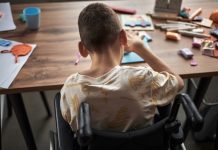The American Education Research Association discusses how COVID-19 school closures in Spring 2020 impacted student learning
The study was published today (29 October) in Educational Researcher, a peer-reviewed journal of the American Educational Research Association.
Unsurprisingly, students did not gain as much academic knowledge as they did during the shortened 2019-2020 school year.
Study coauthor Megan Kuhfeld, senior research scientist at NWEA, pointed out a lack of initial data:
“At the same time that students and educators had growing concerns about the impacts of school closures on learning, testing was widely cancelled, leaving us with little available data on how students were faring during the spring.”
Higher gains in reading, lower gains in maths
The top third of students made gains in reading, meaning that those who didn’t need educational support as much were able to continue gaining knowledge. On the other hand, students generally returned to school in September with around 63-68% of the expected level of knowledge in reading. But they only returned with 37-50% of the expected knowledge in maths.
“It will be important to identify students who are struggling and fallen behind academically and provide those students with extra supports, such as high dosage tutoring and additional structural time,” said Megan Kuhfeld.
“Inequalities that have existed in our education system prior to COVID are getting worse at the same time school districts are facing massive budget shortages. We need additional investments from the federal government to prevent looming school budget cuts.”
The marginalised students lose out
Another point has been made by a separate study, which looked at the socio-economic and racial breakdown of which schools may stay fully online. Just 13% of the most disadvantaged education areas intend to offer face-to-face lessons this fall. The picture is similar for those serving a high number of non-white students, with fewer than one in ten (7%) reopening campuses.
“The disruption caused by the pandemic represents a crossroads for public education in the United States,” says David Marshall, from Auburn University.
“Parents may emerge from this moment more empowered than before and be ready to take greater responsibility over their children’s education. Or they may find themselves weary of the stress caused by the pandemic and ready for a return to what they were accustomed to prior to this disruption.”
The situation of deaf students has recently been raised, with many finding inadequate levels of captioning and feeling disconnected from their key source of education.
Educators and policymakers may need to deal with the fact that many students are substantially behind as a result of COVID-19 school closures – especially if many schools remain physically closed throughout 2020-21.











